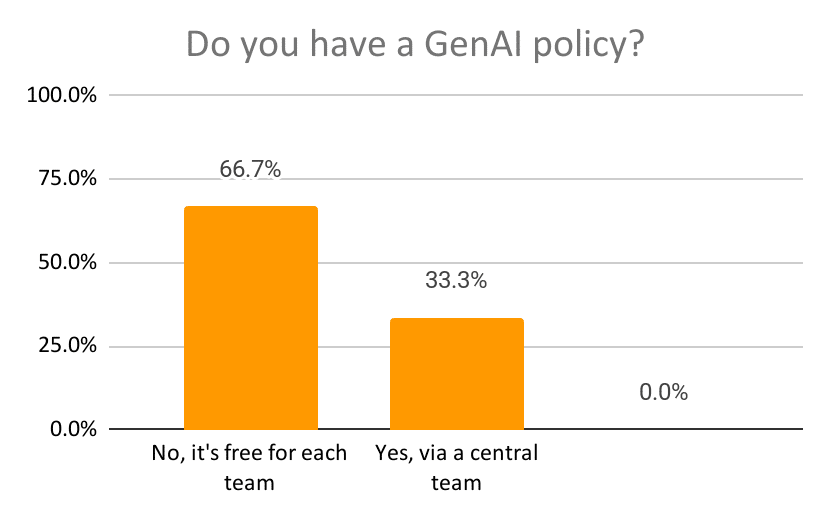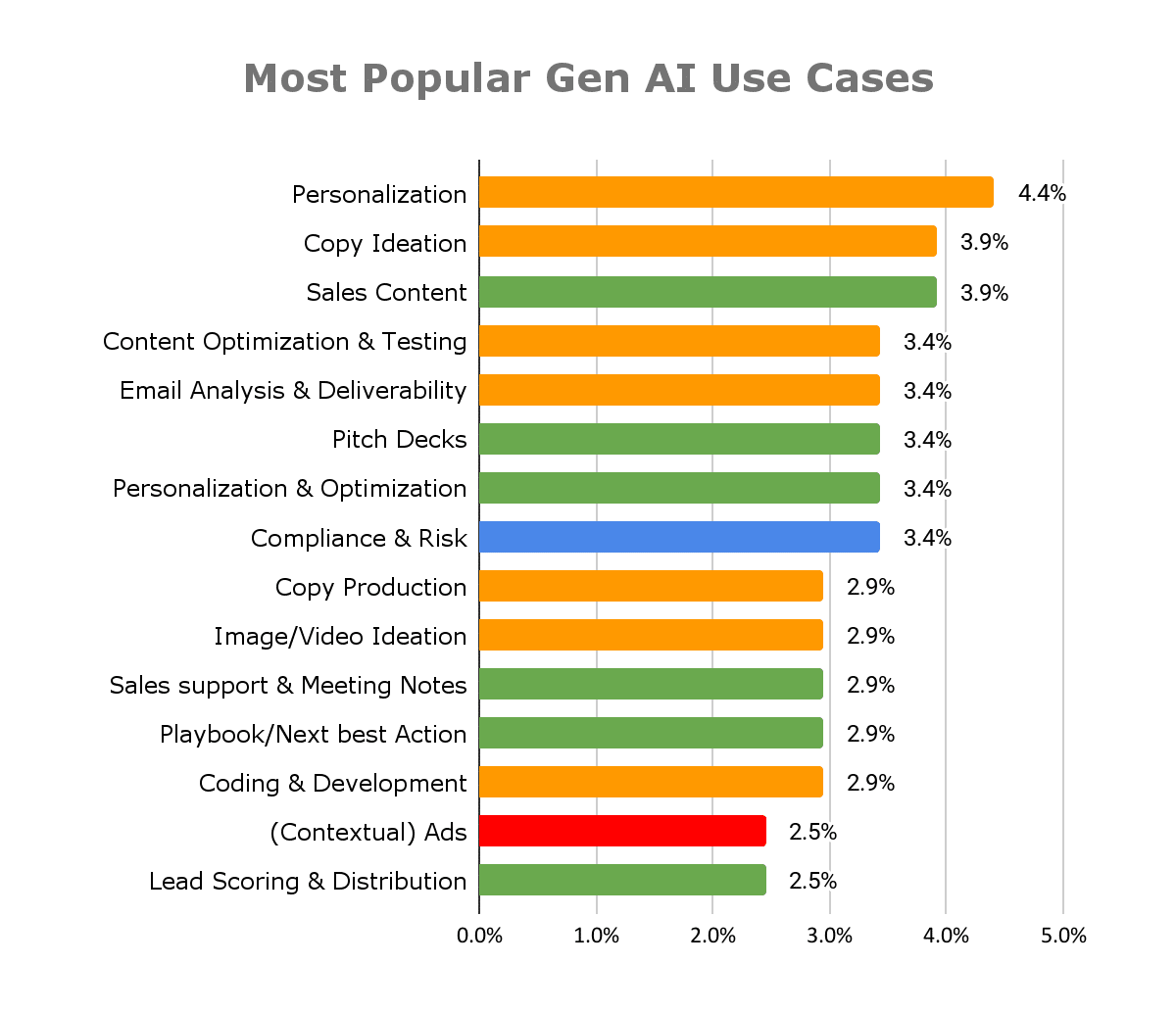Are you keeping pace with how your peers are using generative AI? At MartechTribe, we surveyed 283 marketing professionals across four core teams to understand how they’re adopting genAI in their daily work. The data reveals familiar patterns and surprising shifts, suggesting that AI is reshaping tools, team responsibilities and required skills.
Each team shows a distinct genAI signature. Some use cases align squarely with their core mission, but these are fast becoming table stakes. Others stretch beyond traditional boundaries, revealing new opportunities and skill sets as generative AI democratizes specific expert capabilities more accessible across roles.
The table below highlights what’s expected — and what’s emerging — for each team. In the sections that follow, we unpack the nuances behind these shifts.
| Team | Expected Use Cases | Unexpected Use Cases |
| Marketing management | • Clear alignment with management and data use cases such as dashboards, data integration and sourcing — matching their strategic and oversight role. | • Strong engagement with content and experience due to closer involvement in tactical execution or tool exploration.
• Low in sales and commerce. • Most active in social and relationships of all roles, likely using platforms to share leadership perspectives. |
| Marketing communication | • Heavy use of content and experience is fully in line with their campaign and creative responsibilities.
• Engagement in sales and commerce and social and relationships reflects the customer-facing mission. |
• Notable increase in data use cases suggests a shift toward more self-service, moving beyond reliance on Ops or analysts.
• Underuse of ads and promotion aligns with that function sitting elsewhere. |
| Sales | • Strong fit with sales and commerce: personalization, proposals and CRM support.
• Management use aligns with meeting notes, playbooks and coordination. |
• High usage of content and experience shows shared responsibility for content creation. Suggests more overlap with marketing than traditionally expected. |
| MOps | • Usage of data and management use cases reflects their focus on integration, automation, compliance and performance tracking. | • High involvement in content and experience points to expanded responsibilities, supporting email flows or optimization, often owned by comms. |
Marketing management team
The marketing management team’s core responsibility is setting strategic direction for marketing and ensuring alignment with overall business goals. Our survey encompasses roles like:
- VP, SVP or EVP of marketing.
- Marketing managers.
- Chief marketing officers.
- Chief executive officers (smaller companies).
- Marketing directors.

About 46.5% say that the AI policy is free for each team. This is surprising, given that this team is responsible for setting the direction and ensuring alignment across functions. Allowing each team to create its own AI policy points to a lack of cohesive leadership, inconsistent standards and increased risk, none of which align with their role.
On the other hand, 44% report that their company has an AI policy via a central team. This aligns with the team’s strategic responsibility. Additionally, 9.4% report having a decentralized AI policy sitting with labs. This suggests that structured experimentation is taking place, which is another form of guided innovation appropriate for this team.

The marketing management team is expected to engage with both management and data-related genAI use cases, as they are responsible for:
- Strategy formulation.
- Adoption guidance.
- Performance measurement.
- Forecasting.
Hence, their involvement in areas such as dashboards, data integration and data sourcing is well aligned.
What stands out is their high involvement in content and experience-related use cases. This indicates their proximity to tactical execution, including:
- Copy ideation.
- Content production.
- Testing.
- Personalization.
It also suggests they want to familiarize themselves with their teams’ tools. Given their strategic mandate, one would expect a stronger connection to revenue-driving functions, like sales and commerce. The relatively low engagement here points to a potential oversight.
The highest use of social and relationships use cases is for all four teams. Managers likely use social media to voice their vision on their field of expertise.
Dig deeper: The top 50 genAI use cases in marketing
Marketing communications team
The marketing communications team, also known as marcom or the comms team, crafts and delivers campaigns and messaging across channels to shape brand perception and drive audience engagement. The survey covers roles like:
- Marketing executive/coordinator.
- Creative director.
Half of the respondents reported that there is no policy or that it is handled freely across teams. This high number may indicate not the absence of policy but rather a lack of awareness. Only 49% say an AI policy exists in their organization, compared to 53.4% of managers. Even when a central team has defined a policy, it may not be communicated effectively. In large organizations, these policies often sit in internal systems like MS SharePoint without proactive rollout. Comms teams are typically focused on timelines and content delivery, so they may treat genAI tools pragmatically and overlook policy guidelines.

Content and experience use cases fit this team naturally. Their heavy usage of genAI for messaging, creative generation and engagement aligns well with their mission.

The team also shows a relatively strong involvement in sales and commerce and social and relationships use cases, which is to be expected given their role in crafting public-facing communication across platforms. Their involvement in management-related use cases likely reflects their role in coordinating campaigns, projects and tasks between teams and agencies. Lower usage in ads and promotion is unsurprising, as that is often managed by a separate function focused on media buying.
Interestingly, while performance data is important to their work (for tasks like A/B testing or sentiment analysis), this team has traditionally depended on MOps or data analysts for those insights. Increased usage suggests a move toward more independent data use, which, while positive, is new territory.

Sales team
The sales team engages directly with prospects and customers to convert interest into revenue through tailored conversations and solutions. In our data, roles like sales manager and pre-sales manager are prevalent.
Sales teams report the lowest awareness of an AI policy, at only 33%. Sales teams often work independently based on region, product or client segment, which creates inconsistency in how policies are understood or applied. Their focus is typically on revenue generation, not compliance.
When genAI tools help close deals more efficiently, they are adopted immediately, regardless of governance considerations. If a policy exists but is framed in abstract or legal terms, it may go unnoticed unless it directly affects tools used in daily workflows like CRM systems. Companies may need to develop sales-specific guidelines to increase relevance.

This team’s use of sales and commerce genAI capabilities aligns entirely with expectations. They’re applying it to personalize messages, generate proposals and manage pitch materials.

They also use:
- Copy ideation, pitch decks, personalization and optimization (4.4% and 3.4%, respectively).
- Tools for sales support and meeting notes (2.9%).
- Playbooks or next best action (2.9%) .
- Lead scoring and distribution (2.5%).
The high use of content and experience-related tools suggests a shared responsibility for content creation, particularly in developing sales collateral or tailored proposals — likely in close collaboration with marketing. This explains their relatively high use of management use cases (16.7%).
Sales teams increasingly rely on data to prioritize accounts and tailor their outreach, making their use of CRM-integrated genAI tools an expected development.

Dig deeper: AI can find your ideal customers, but only humans can build real relationships
Marketing operations (MOps) team
The MOps team builds and runs the infrastructure, tools, data and processes that enable marketing execution and performance measurement. We see roles such as:
- Program manager, operational excellence.
- Marketing operations manager.
- MRM manager.
- IT manager.
- Marketing procurement manager.
No less than 46.2% say an AI policy is free for each team. That is surprising for a team that regularly partners with IT and legal to implement central frameworks and enforce standards. Their remit includes process, data and technology governance, so a lack of awareness or adoption signals a breakdown in communication or structure.
On the other hand, 53.9% of this group report that genAI tools are being operationalized with strategic guidance. This indicates that a formal policy, if executable, would support MOps in scaling its implementation.

Their strong use of data-related use cases directly matches their core function. GenAI helps them integrate, clean, analyze and activate data. This explains the popularity of use cases such as:
- Compliance and risk (4.6%).
- Governance and compliance (4.1%).
- Dashboards (3.2%).
- Data integration and sourcing (3.7% and 2.4%).
- Data automation (3.4%).

MOps teams also contribute to performance tracking, governance and coordination of cross-functional initiatives, making their use of management-related use cases appropriate.
However, the high level of involvement in content and experience is notable. While they may support campaign execution, such deep engagement suggests that MOps could be taking on content-related responsibilities, perhaps in areas like copywriting for automated email automation flows or optimization tasks.

The post What genAI means for your marketing skills appeared first on MarTech.
